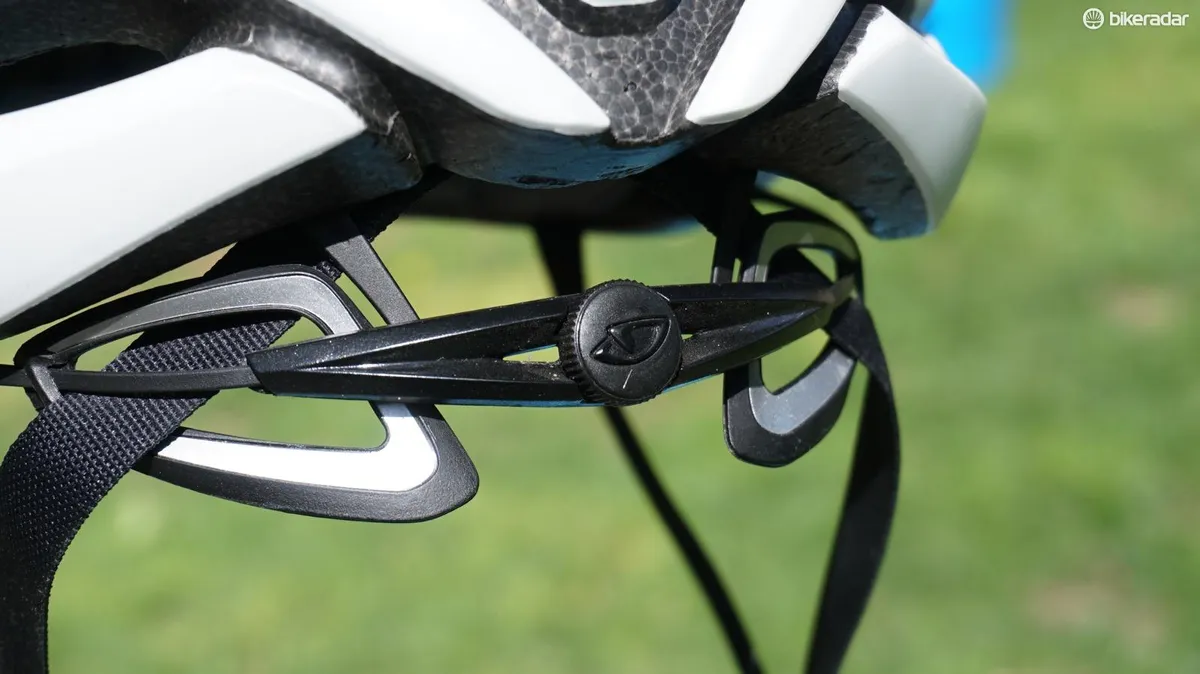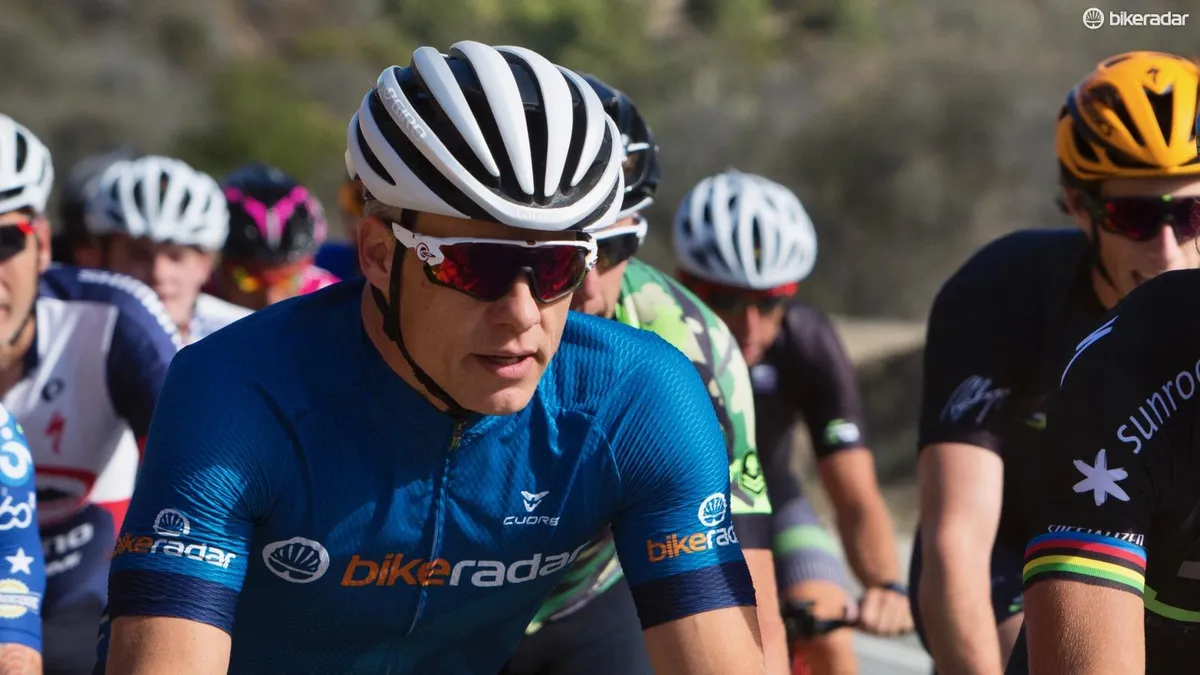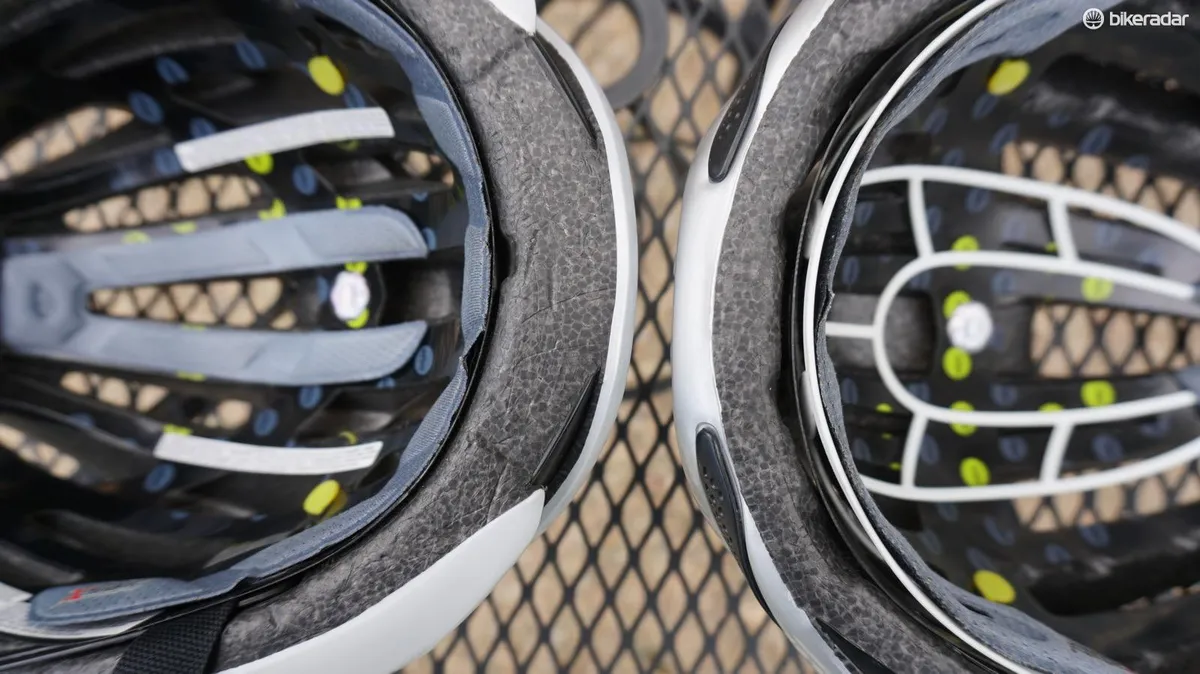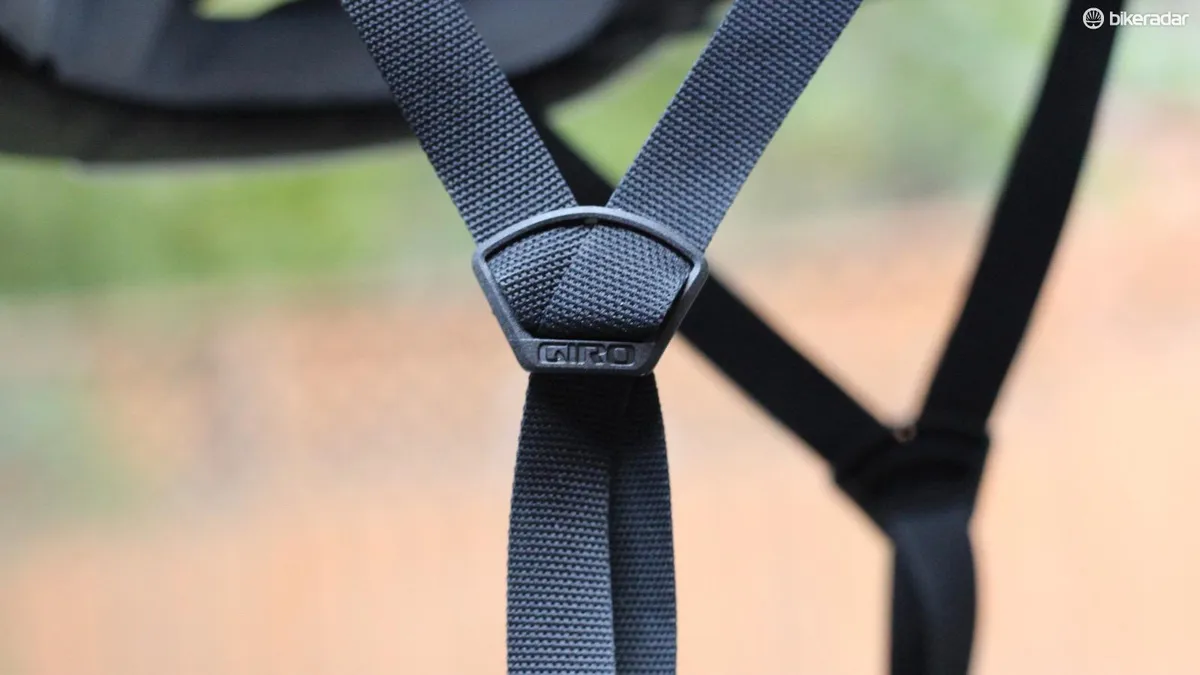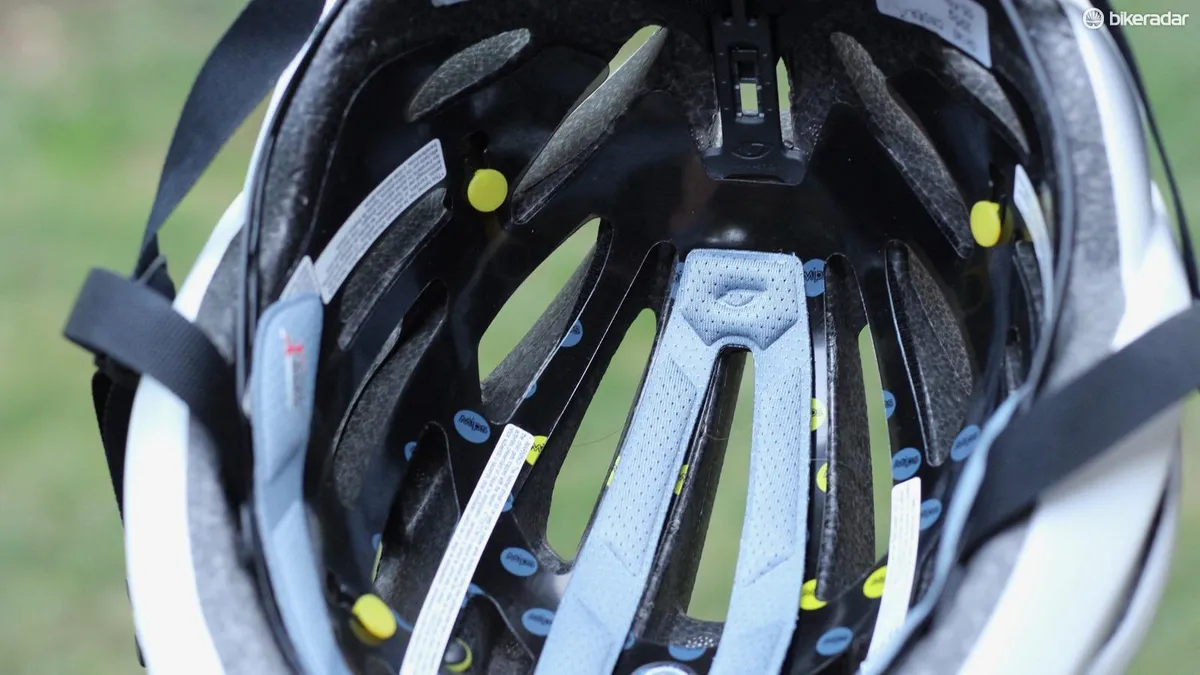The Giro Cinder is a MIPS road helmet that costs just over half as much as the California company’s top-end Synthe MIPS.
I love the fit and feel of the Cinder, except for on hot days and/or when doing strenuous climbs. In those situations, the difference in ventilation to the Synthe becomes quite apparent.
Cinder MIPS vs. Synthe MIPS, in fit and ventilation

Visually the two are quite similar, and while there are small differences in the size and shape of the vents, the main difference in air flow lies within the helmets.
The Synthe uses Giro’s Roc Loc Air retention system, which keeps the helmet slightly off the head, especially at the front. This design allows a little more airflow across the forehead.
The Cinder uses Giro’s Roc Loc 5 retention system, which is anchored at the temples of the helmet. The front pad of the Cinder lays right on top of the MIPS liner, which in turn lays flat against the foam body of the helmet.
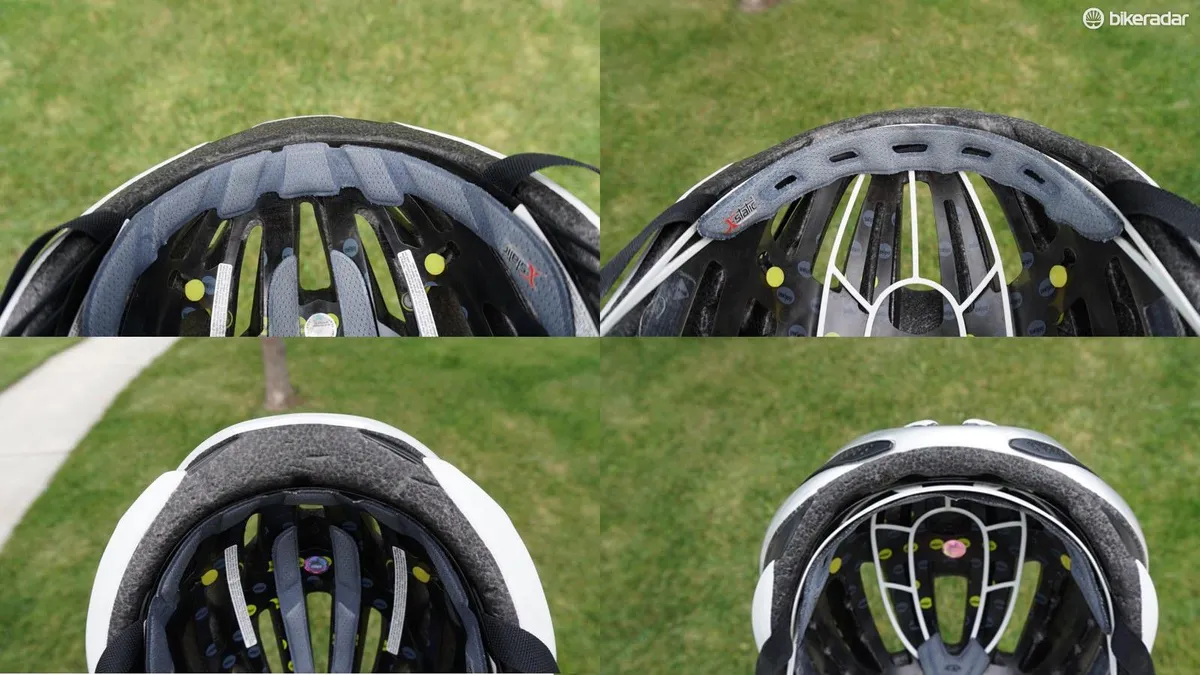
So Roc Loc Air is better than Roc Loc 5, right? Well, here’s the thing: over months of testing I have found myself grabbing the Cinder over the Synthe most of the time for a couple of reasons.
One, the Cinder just feels more comfortable to me, perhaps because the weight of the helmet is distributed throughout the inside, inside of resting on just the 360-degree plastic Roc Loc Air band.
And two, I can fit into a medium Cinder but have to bump up to a large Synthe, and I prefer a smaller helmet than a wider one, pretentious roadie that I am.
I say ‘most of the time’ with the disclaimer being hot days with climbing. I’m not sure how much of the Synthe’s superior ventilation has to do with its larger vents or the off-the-head Roc Loc Air design, but the difference on steamy, grinding climbs is huge.
Easy to adjust

The Roc Loc 5 on the Cinder is easy to adjust for circumference with a small dial and can be adjusted vertically, too.
Reflective elements on the back are a sensible touch, without being gaudy.
I weighed my medium Cinder at 303g. A medium Synthe is more like 270g.
The Cinder comes in six styles and the comparable women’s Ember comes in four designs.
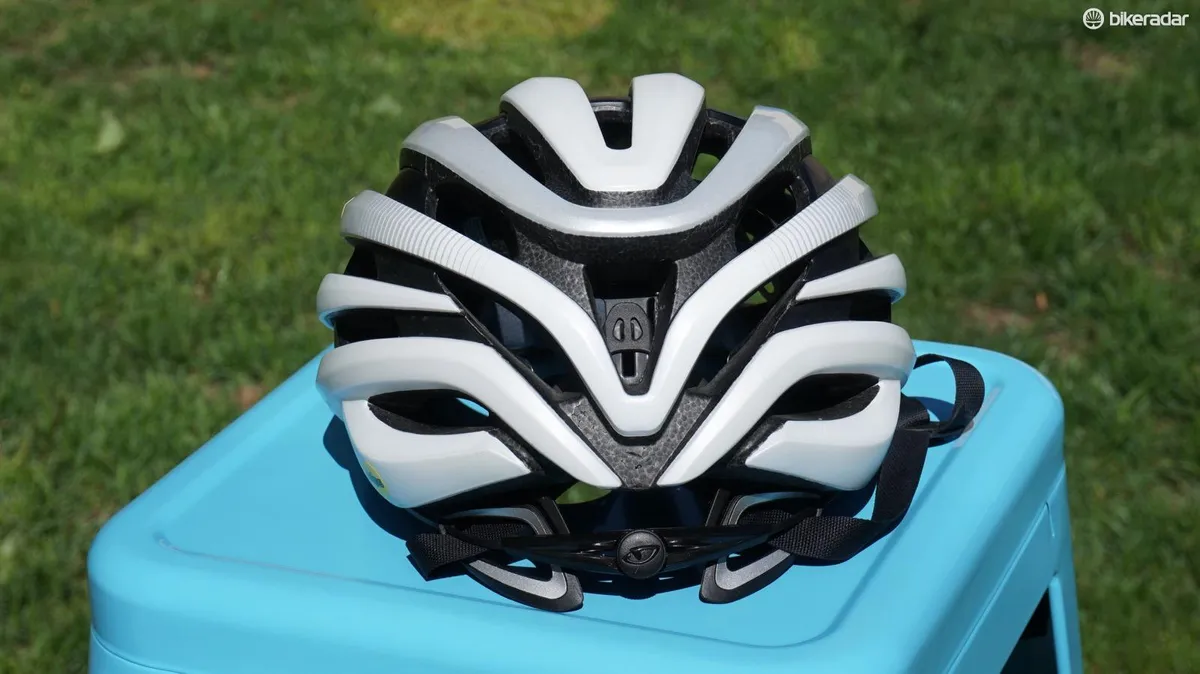
Giro now has MIPS helmets starting at $65 with the Revel and Bishop. You can get a Giro helmet for as little as $40 with the Trinity. Personally, I like the graphics on the $65 Sub Pop Foray.
Bottom line: Good lid but hot on the climbs
The Giro Cinder is a good-looking helmet with modern protection at a decent price. It’s very comfortable, at least in my estimation, for general fit and for most riding conditions. It’s just a sweat bucket on the climbs.
